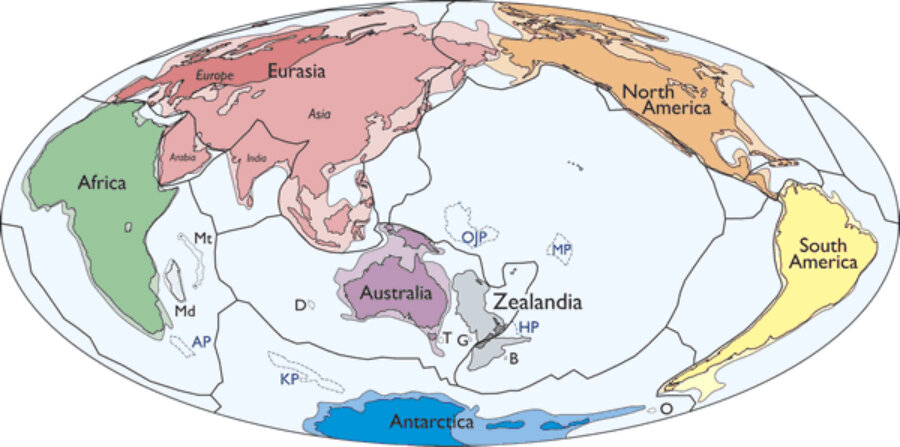Where is Zealandia? Eighth continent discovered, underwater
Loading...
You know the seven continents. Meet the eighth.
A new study published in the March/April 2017 issue of The Geological Society of America’s Journal argues that a mostly submerged landmass in the southwest Pacific should be classified as a continent, pointing to New Caledonia as well as New Zealand’s North and South Islands as the continent’s three exposed pieces.
So you won't be able to visit unless you pack scuba gear, since 94 percent of the 1.9 million square-mile landmass, which is about two-thirds the size of Australia, lies underwater, according to the study.
No scientific body exists to certify continents. But the study’s authors write that Zealandia fits all of the other criteria used for the other seven continents: high elevation relative to the surrounding area, a broad range of the three main types of geology, well-defined limits, and a crust thicker than the ocean floor. Lead author Nick Mortimer, a geologist at New Zealand’s GNS Science research institute, says he and the other authors have been assembling their case for more than two decades.
“If we could pull the plug on the oceans, it would be clear to everybody that we have mountain chains and a big, high-standing continent,” he told New Zealand's TVNZ, according to Phys.org.
“What we hope is that Zealandia will appear on world maps, in schools, everywhere.”
“I think the revelation of a new continent is pretty exciting.”
The study seems to shine a light on the unusual geology of New Zealand, where last November a 7.6-magnitude earthquake made headlines not only for the destruction it caused, but for its creation of new land features along a fault in Waipapa Bay, as The Christian Science Monitor reported in November. One of those new land features, an underwater reef, was thrown up some 20 feet above sea level in a matter of seconds during the quake:
After the dust had settled, some residents of the South Island realized that their beaches looked very different. The earthquake had been so powerful that it lifted the sea floor one to six feet above its previous position, leaving a massive cliff in the middle of the beach....
The pinkish seabed is an unusual sight for residents of the tourist town of Kaikoura. Now rising between one and six feet above the rest of the beach, the new sea wall is covered with seaweed and marine animals like crayfish and sea snails.
The South Island’s coastline is not the only thing affected by the earthquake. The nearby Kekerengu fault is a vertical fault, which means that many local roads now feature steep drop offs, or suffered landslides as a result of the earthquake.
The authors say that to recognize Zealandia as a continent would amount to more than just adding "an extra name on a list."
"That a continent can be so submerged yet unfragmented" makes it useful "in exploring the cohesion and breakup of continental crust," they write.
"Zealandia illustrates that the large and the obvious in natural science can be overlooked."








